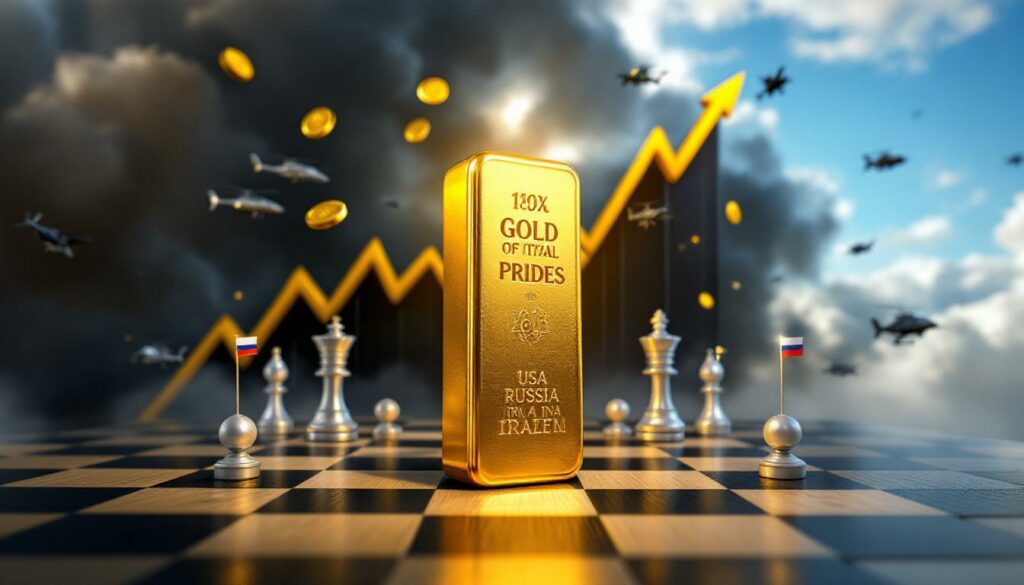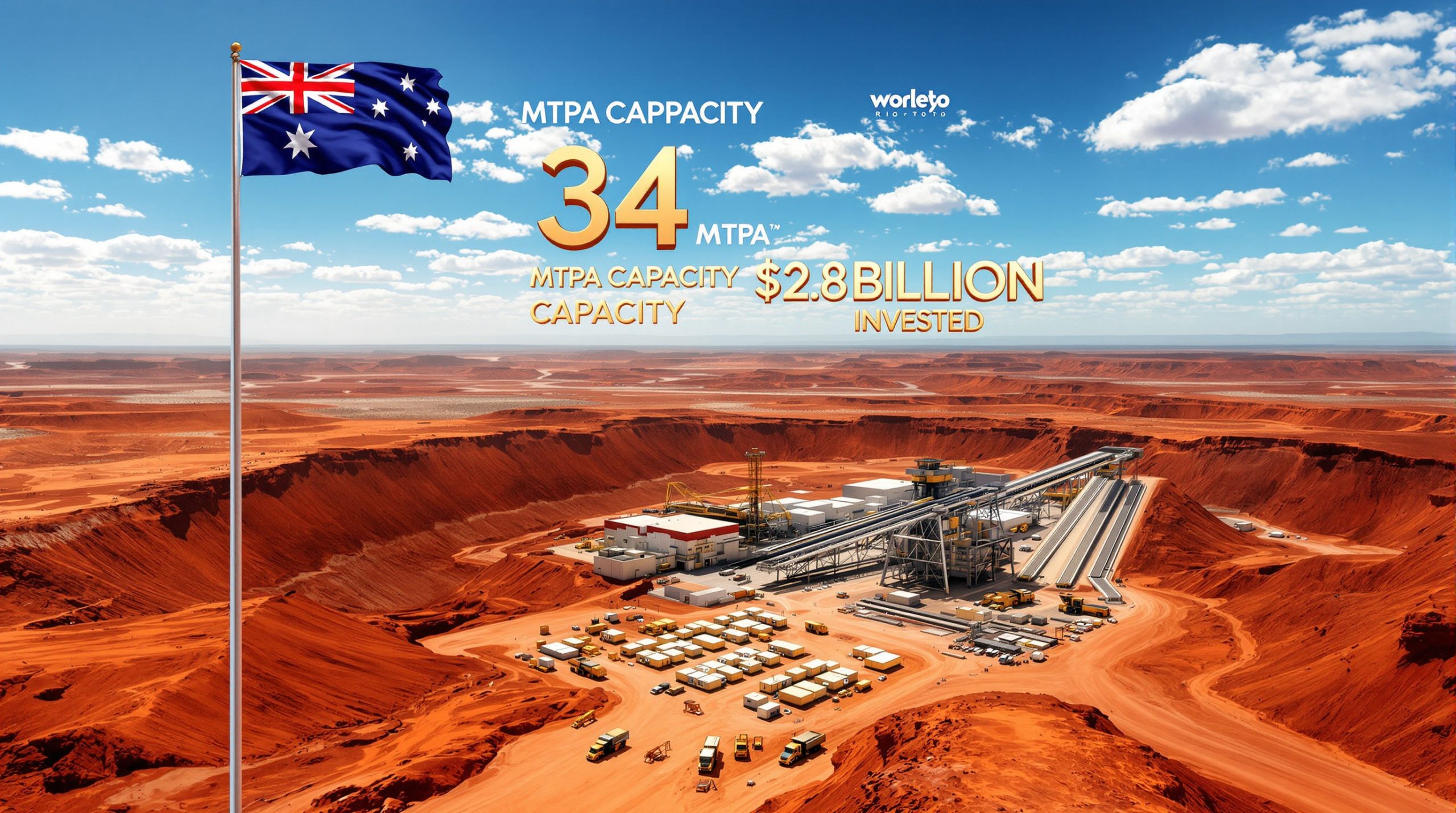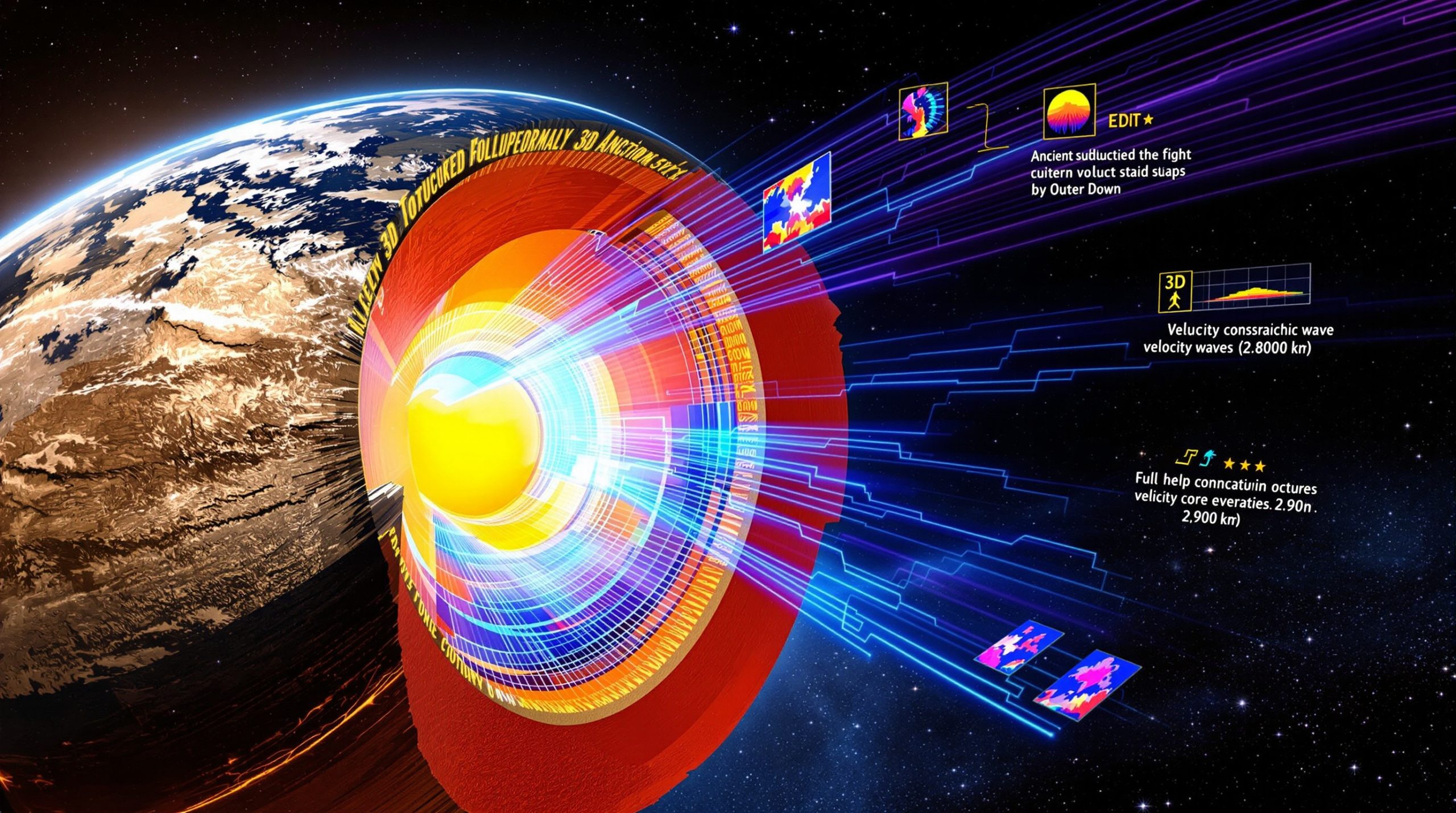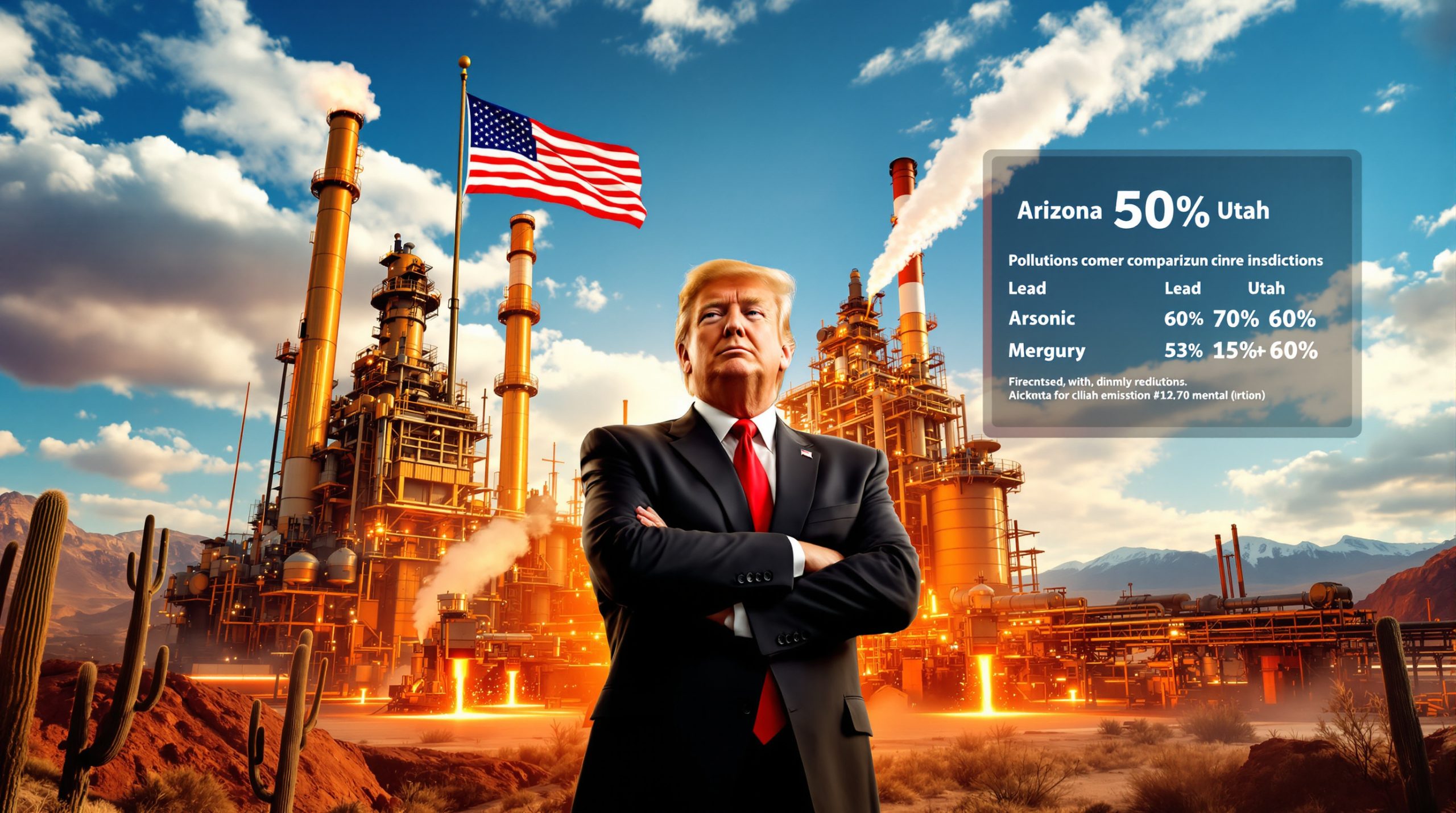What Drives Precious Metals During Global Conflicts?
In times of global uncertainty, precious metals emerge not just as commodities but as financial anchors in turbulent markets. The relationship between geopolitical tensions and precious metals forms a critical component of investment strategy that transcends traditional market dynamics.
The Psychological Impact of Uncertainty
Precious metals, particularly gold, function as both physical assets and psychological safe havens during turbulent times. This dual role has intensified as international conflicts proliferate across regions.
"Gold is playing a significant role not only as a physical asset but also as a psychological asset," notes Yavon Blashik, President & CEO of BMG Group. "The market sentiment toward gold has shifted dramatically as geopolitical tensions escalate."
This psychological dimension cannot be overstated—when conventional financial systems appear vulnerable, investors instinctively gravitate toward tangible assets with historical stability. Gold strategic investment during recent conflicts demonstrates this pattern, with prices rising approximately 25% in six months and 40% year-over-year, significantly outpacing most traditional investment vehicles.
Historical data reveals a consistent pattern: precious metals typically appreciate during periods of international conflict. This isn't merely coincidental but reflects their fundamental characteristics as stores of value independent from government monetary policies and banking systems.
"Gold has risen 650-680% over the past two decades, demonstrating its long-term resilience through multiple geopolitical crises and economic downturns."
The 1-2% daily price fluctuations that sometimes concern newer investors represent normal volatility within gold's broader uptrend and shouldn't obscure the metal's consistent performance during extended periods of global uncertainty.
Central Bank Strategies and Gold Accumulation
Perhaps the most telling indicator of precious metals' role during global conflicts comes from observing central bank behavior. Major central banks continue aggressive gold purchasing programs despite price fluctuations—a strategy that speaks volumes about institutional confidence in gold during uncertain times.
These gold reserves serve as strategic national assets independent of the dollar-based financial system. Central banks are systematically increasing their precious metals holdings as a hedge against currency volatility and geopolitical risk. This institutional buying creates a consistent demand floor regardless of retail investor sentiment.
The acceleration of central bank gold accumulation represents a fundamental shift in global monetary strategy. Nations experiencing or anticipating geopolitical tensions are particularly active in building gold reserves, creating a direct correlation between conflict risk and precious metals demand.
Which Precious Metals Benefit Most From Geopolitical Instability?
While all precious metals tend to respond to geopolitical tensions, they do so with varying degrees of sensitivity and for different fundamental reasons. Understanding these differences provides investors with crucial insights for strategic allocation.
Gold: The Traditional Safe-Haven Asset
Gold stands as the quintessential safe-haven asset during times of geopolitical uncertainty. Its current trajectory reflects this status, with prices having risen approximately 25% in six months and 40% year-over-year—a remarkable performance for any investment class.
The long-term performance metrics are even more compelling. Gold has demonstrated 650-680% appreciation over the past two decades, spanning multiple geopolitical crises and economic cycles. This consistent performance through varied market conditions reinforces gold's status as the primary beneficiary during periods of international tension.
Market projections suggest potential for $4,000-4,500 per ounce in the current environment, representing significant upside from current levels. While day-to-day price fluctuations of 1-2% may concern some investors, these movements represent normal volatility within the broader uptrend and shouldn't distract from the metal's long-term trajectory.
Gold's unique combination of liquidity, universal recognition, and minimal counterparty risk makes it particularly responsive to geopolitical developments—often showing price movement within minutes of breaking news about international conflicts.
Platinum: The Overlooked Strategic Metal
While gold captures headlines during geopolitical tensions, platinum's strategic importance is often underappreciated despite its critical role in both industrial and defense applications. The global platinum supply chain presents significant geopolitical vulnerabilities that directly impact its market dynamics.
South Africa supplies 60-70% of global platinum production, creating an inherent concentration risk. Russia represents approximately 25% of world production but faces international sanctions that restrict Western access to these resources—a situation that benefits China through its strategic partnership with Russia.
Platinum's critical applications explain its strategic importance during conflicts:
- Catalysts for explosive manufacturing
- Jet fuel production
- Fertilizer manufacturing
- Automotive catalytic converters
- Advanced weapons systems and aerospace components
This strategic importance has historical precedent: during World War II, the U.S. government prohibited non-military platinum use, redirecting all available supplies to defense applications. This historical example demonstrates how platinum demand can rapidly intensify during international conflicts.
The current geopolitical landscape—with Russia under sanctions and South African production vulnerable to domestic challenges—creates potential supply constraints that could dramatically impact platinum pricing in a prolonged conflict scenario.
Silver: Industrial and Monetary Applications
Silver occupies a unique position during geopolitical tensions due to its dual role as both industrial commodity and monetary metal. This hybrid status means silver responds to different aspects of international conflicts than either gold or platinum.
Silver's strategic importance in electronics, solar energy, and medical applications creates industrial demand that remains relatively inelastic even during geopolitical turmoil. Simultaneously, its historical monetary role attracts investment during currency concerns related to international conflicts.
Silver typically experiences higher volatility than gold during geopolitical events—a characteristic that can benefit strategic investors. While generally following gold's directional movement, silver often demonstrates amplified percentage gains and losses, making timing more critical for silver market stress than for gold.
The silver market's smaller size relative to gold makes it more susceptible to both supply disruptions and demand surges during international tensions. This creates opportunities for investors who understand the metal's unique response patterns to specific types of geopolitical developments.
How Are Regional Conflicts Reshaping Precious Metals Markets?
Different regional conflicts impact precious metals markets in distinct ways, depending on the conflict's nature, the regions involved, and potential implications for global supply chains and financial systems.
Middle East Tensions and Market Response
Escalation between Israel, United States, and Iran creates persistent uncertainty that reverberates through precious metals markets. Gold prices analysis demonstrates heightened sensitivity to Middle Eastern conflicts due to the region's strategic importance to global energy markets and potential for broader international involvement.
The complex web of alliances and rivalries in the Middle East means that even seemingly contained conflicts carry risk of expansion. Markets price this uncertainty into precious metals, creating what analysts describe as a "geopolitical premium" that remains relatively stable even during temporary diplomatic breakthroughs.
Unresolved governance issues in Palestine contribute to regional instability and maintain an elevated baseline of geopolitical risk that supports precious metals prices. This long-standing situation creates what market participants call "structural support" for gold prices independent of immediate conflict developments.
Market anticipation of potential responses creates price premiums regardless of actual events—a phenomenon where the threat of conflict can be as impactful as conflict itself. Gold markets particularly demonstrate this "anticipatory pricing" pattern during Middle East tensions.
Russia-Ukraine Conflict Implications
The Russia-Ukraine conflict represents a multidimensional challenge for precious metals markets, with impacts extending far beyond the immediate theater of operations. Temporary peace negotiations have failed to produce lasting resolutions, creating persistent uncertainty that supports precious metals prices.
Historical and social factors suggest continued long-term instability regardless of diplomatic efforts. These deep-rooted tensions maintain what analysts term a "conflict premium" in precious metals markets, particularly for platinum group metals heavily sourced from Russia.
The conflict diverts attention and resources from other geopolitical theaters, creating a complex interplay of priorities that impacts international response capabilities. This resource diversion affects everything from diplomatic bandwidth to military preparedness, indirectly influencing precious metals markets through general uncertainty.
Perhaps most significantly, Russian resource control impacts global supply chains for precious and strategic metals. Sanctions limiting Russian exports create supply constraints that disproportionately affect platinum and palladium markets, potentially leading to price premiums during periods of heightened tension.
China's Strategic Positioning
China's geopolitical strategy includes securing access to Russian natural resources, including platinum and other strategic metals, through carefully maintained partnerships. This resource strategy directly impacts global metals markets by creating alternative supply channels outside Western financial systems.
The development of alternative trading systems that bypass dollar-based settlement represents another significant shift. China's system enables instant settlement versus traditional SWIFT system delays, creating efficiency advantages for participating nations while potentially reducing dollar demand.
Chinese officials have expressed concerns about potential Russian losses in Ukraine conflict, fearing that such an outcome would redirect Western attention toward China. This strategic calculation influences China's resource acquisition strategy, particularly for precious and strategic metals, creating sustained demand regardless of price fluctuations.
These developments represent a fundamental realignment of precious metals flows, with increasing volumes moving through non-Western channels. This bifurcation creates what market analysts describe as "parallel markets" with potentially different pricing mechanisms and transparency levels.
What Role Do Precious Metals Play in Changing Financial Systems?
Beyond their immediate response to conflicts, precious metals are increasingly integrated into emerging alternative financial architectures that challenge traditional Western-dominated systems.
Gold-Backed Digital Assets and Trading Systems
Both governments and private entities are actively exploring gold-backed digital currencies as alternatives to conventional fiat systems. These innovations leverage gold's credibility while adding technological efficiency, creating hybrid instruments that appeal to both traditional gold investors and digital asset adopters.
Alternative trading systems designed to circumvent dollar-dominated financial networks represent another frontier where precious metals play a central role. These systems typically feature gold as a settlement mechanism or valuation benchmark, reflecting its universal recognition and independence from any single national currency.
Gold's 5,000-year history as money provides credibility to these new financial instruments that pure digital currencies cannot match. This historical legitimacy explains why even technologically advanced trading systems incorporate gold rather than relying exclusively on algorithmic or fiat-based solutions.
The store-of-value characteristics becoming increasingly important in uncertain monetary environments drive institutional interest in gold-backed systems. As central banks diversify reserves away from traditional currencies, these alternative systems gain both legitimacy and liquidity.
Shifting International Alliances and Trade Patterns
BRICS nations (Brazil, Russia, India, China, South Africa) are actively developing alternative economic frameworks that incorporate precious metals in central roles. These initiatives explicitly aim to reduce dollar dependence while creating mechanisms for intra-BRICS trade that minimize exposure to Western financial sanctions.
Potential tariffs on countries aligned with anti-Western policies could accelerate this bifurcation, creating stronger incentives for alternative trading systems. Such tariffs would likely increase demand for precious metals as both trade settlement mechanisms and reserve assets for affected nations.
The competition between Western financial systems and emerging alternatives creates what economists term "system hedging"—where nations maintain positions in both systems to minimize risk. Precious metals, particularly gold, serve as natural bridges between these competing systems due to their universal recognition and physical nature.
Natural resource control has become central to international power dynamics, with precious metals representing a particularly strategic component due to their monetary characteristics. Nations rich in these resources gain leverage beyond their economic or military capability, creating new geopolitical equations that impact market dynamics.
How Are Defense Spending and NATO Commitments Affecting Precious Metals?
Military expenditures and defense alliances create specific demand patterns for precious metals that extend beyond their general safe-haven characteristics during conflicts.
NATO Defense Spending Increases
Recent NATO summit discussions resulted in commitments to allocate 5% of GDP to defense (with limited exceptions such as Spain). This represents a significant increase from previous targets and directly impacts demand for strategic metals used in defense applications.
Increased military procurement creates substantial demand for critical minerals energy transition used in advanced weapons systems, communication technologies, and aerospace applications. This procurement-driven demand operates on different cycles than consumer or industrial demand, creating distinct market dynamics.
Defense industry growth consistently correlates with precious metals appreciation across multiple historical periods. This relationship reflects both the direct material requirements of defense systems and the general uncertainty that typically accompanies military buildups.
Platinum and other PGMs are particularly critical for advanced weapons systems and aerospace applications, from missile guidance systems to aircraft components. Their unique properties—including exceptional heat resistance and electrical conductivity—make them irreplaceable in certain military applications, creating inelastic demand during defense spending increases.
Strategic Resource Competition
Control of natural resources is increasingly recognized as central to national security strategies, with precious metals and energy resources representing parallel priorities. This strategic competition manifests in both direct acquisition efforts and complex diplomatic alignments designed to secure resource access.
Energy resources (particularly oil) remain critical geopolitical leverage points that interact with precious metals markets through inflation expectations and currency impacts. The historical correlation between oil price shocks and gold appreciation demonstrates this relationship across multiple conflict scenarios.
Rare and precious metals are increasingly recognized as strategic national assets essential for both defense applications and economic security. This recognition drives both increased government stockpiling and diplomatic efforts to secure supply chains through "friendly-shore" arrangements with allied nations.
Supply chain security for critical raw materials transition increasingly drives policy decisions across major economies, from the U.S. Critical Minerals Strategy to the European Raw Materials Act. These policy frameworks typically prioritize precious and strategic metals with defense applications, creating structural support for these markets independent of immediate conflict developments.
What Investment Strategies Work in This Environment?
The complex interplay between geopolitical tensions and precious metals markets requires nuanced investment approaches that balance multiple factors.
Portfolio Allocation Considerations
Balanced exposure across multiple precious metals provides diversification against specific supply disruptions or demand fluctuations. Different metals respond differently to various aspects of geopolitical tensions, making diversification particularly valuable during complex international scenarios.
Equal allocation between gold, silver, and platinum offers comprehensive protection against different facets of geopolitical risk. Gold provides monetary protection, silver balances industrial and monetary characteristics, while platinum offers exposure to both industrial and strategic applications.
Following central bank strategies provides insight into institutional thinking about geopolitical risks. The substantial increase in central bank gold purchases suggests institutional concern about currency stability and financial system vulnerabilities during international tensions.
Defense industry investments may complement precious metals positions by providing exposure to the demand side of the strategic metals equation. Companies involved in aerospace, advanced materials, and defense systems often benefit from the same geopolitical factors that drive precious metals appreciation.
Physical vs. Financial Exposure Options
Direct ownership of physical metals provides maximum security during systemic crises when financial instruments may face settlement or counterparty challenges. Physical ownership eliminates intermediary risk during precisely the scenarios when precious metals perform their critical function.
ETFs and mining shares offer liquidity and potential leverage to metal prices while avoiding the storage and security considerations of physical ownership. These instruments provide efficient exposure to price movements but introduce counterparty considerations that physical ownership avoids.
Specialized funds providing exposure to multiple precious metals simultaneously offer convenience but require careful examination of underlying holdings and management strategies. The specific allocation between different metals can significantly impact performance during various geopolitical scenarios.
Options strategies for hedging against extreme market volatility provide sophisticated investors with tools to manage risk during rapidly evolving international situations. These strategies can be particularly valuable during periods of heightened tension when price movements may become both substantial and unpredictable.
Supply Concentration Risks
Geographic concentration of production creates vulnerability to disruption that savvy investors monitor closely. South Africa's dominance in platinum production represents a potential bottleneck that could significantly impact prices during either regional instability or production challenges.
Russian sanctions limiting PGM availability to Western markets create an asymmetric market where Chinese manufacturers may gain access to resources unavailable to Western competitors. This bifurcation represents both a risk and an opportunity depending on investment positioning.
China's strategic resource acquisitions are changing global supply dynamics across precious and strategic metals markets. These systematic efforts create potential long-term shifts in availability that transcend short-term price movements and impact fundamental market structures.
Mining companies face increasing environmental, social, and governance (ESG) requirements that impact production capabilities and costs. These factors can constrain supply during periods of increasing demand driven by geopolitical factors, potentially amplifying price movements beyond historical patterns.
What Are the Long-Term Implications for Precious Metals Markets?
Beyond immediate market responses to specific conflicts, geopolitical tensions are driving structural changes that reshape precious metals markets at fundamental levels.
Structural Changes in the Global Financial System
Precious metals are likely to play an increasingly important role in monetary systems as geopolitical fragmentation challenges dollar dominance. This evolution may manifest through either formal arrangements or informal practices that gradually increase the monetary role of gold in particular.
Competition between dollar-based and alternative financial architectures creates structural demand for precious metals as bridging mechanisms between competing systems. Gold's universal recognition makes it an ideal neutral asset for transactions between entities operating in different financial frameworks.
Central bank diversification away from traditional reserve currencies typically benefits gold as the primary alternative monetary asset. This trend accelerates during periods of geopolitical tension when currency stability concerns become more pronounced and diversification urgency increases.
The potential for new gold-standard or partial-backing arrangements has moved from theoretical discussion to active planning in certain jurisdictions. While unlikely to manifest as a classical gold standard, these initiatives could create significant additional demand for physical gold from official sectors.
Strategic Metal Supply Security
Nations are increasingly prioritizing domestic production and friendly-nation sourcing for critical minerals including precious metals. This prioritization manifests through everything from expedited mining permits to strategic stockpiles and trade agreements specifically covering these resources.
Critical minerals strategies being developed by major economies typically highlight precious and strategic metals as priorities. These frameworks create structural support for production expansion in politically stable jurisdictions, potentially altering long-term supply patterns.
Platinum group metals are receiving renewed attention for strategic applications beyond their traditional industrial uses. This attention translates into both increased government stockpiling and research into alternative technologies that could either increase or decrease demand depending on outcomes.
Export restrictions on strategically important metals represent a growing risk as nations prioritize domestic users during supply constraints. Such restrictions would disproportionately impact metals with concentrated production, particularly platinum group metals primarily sourced from South Africa an
Ready to Invest in the Next Major Mineral Discovery?
Discovery Alert instantly notifies investors about significant ASX mineral discoveries using its proprietary Discovery IQ model, turning complex mineral data into actionable insights. Understand why historic discoveries can generate substantial returns by visiting Discovery Alert's dedicated discoveries page and begin your 30-day free trial today to position yourself ahead of the market.




